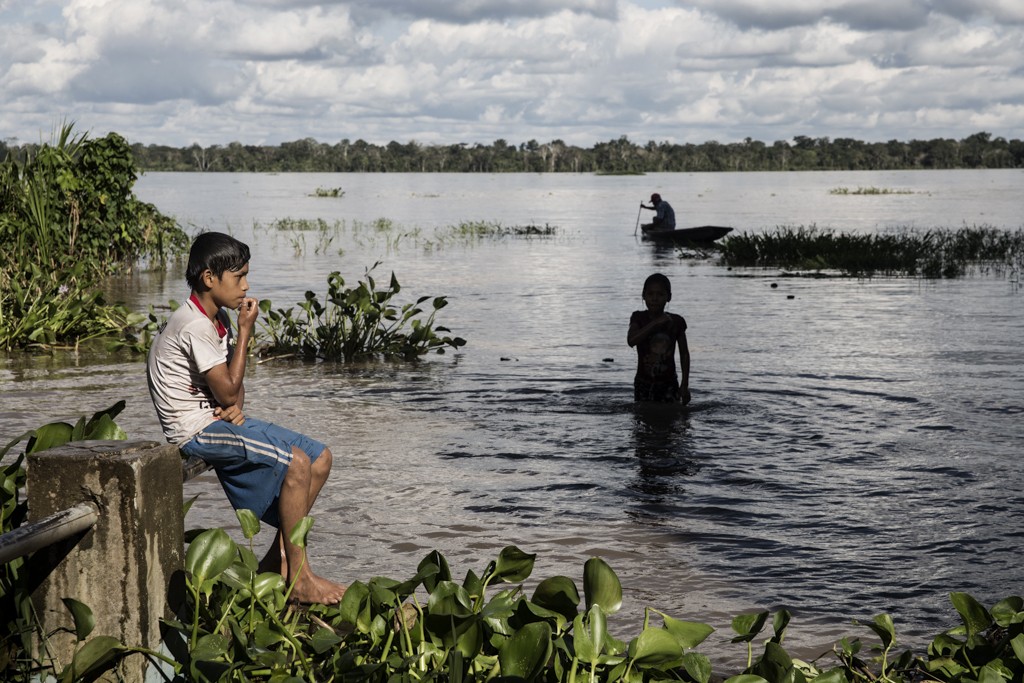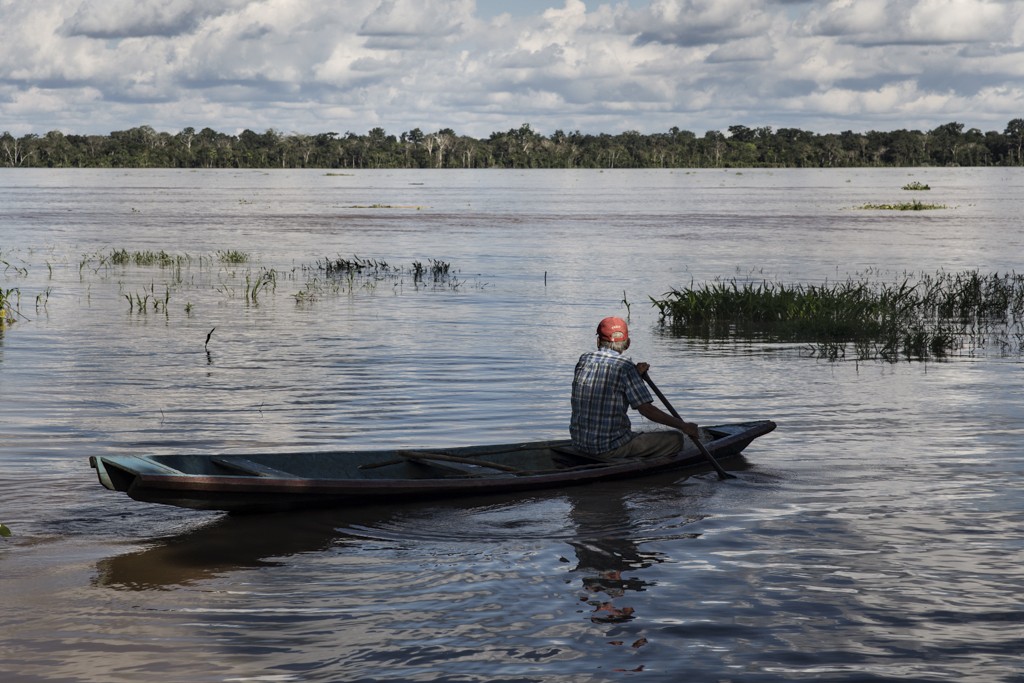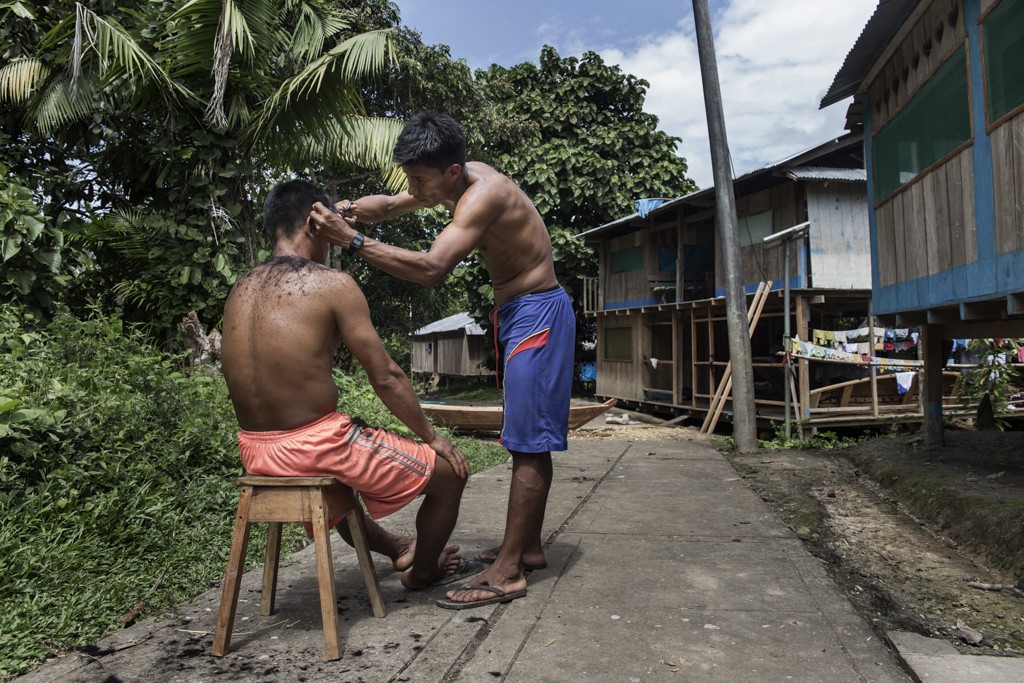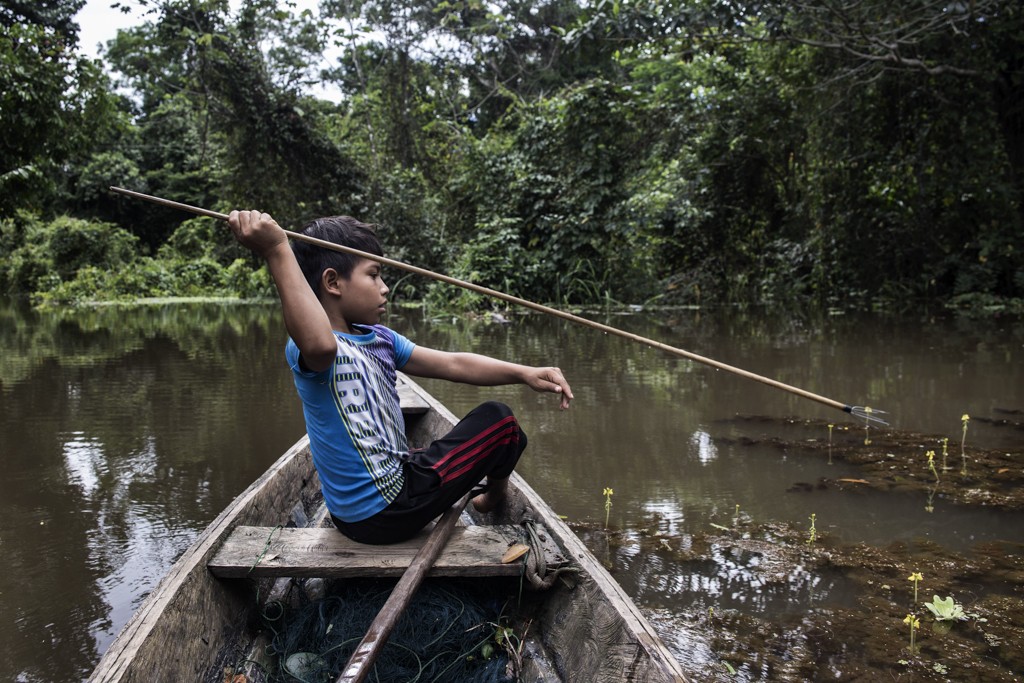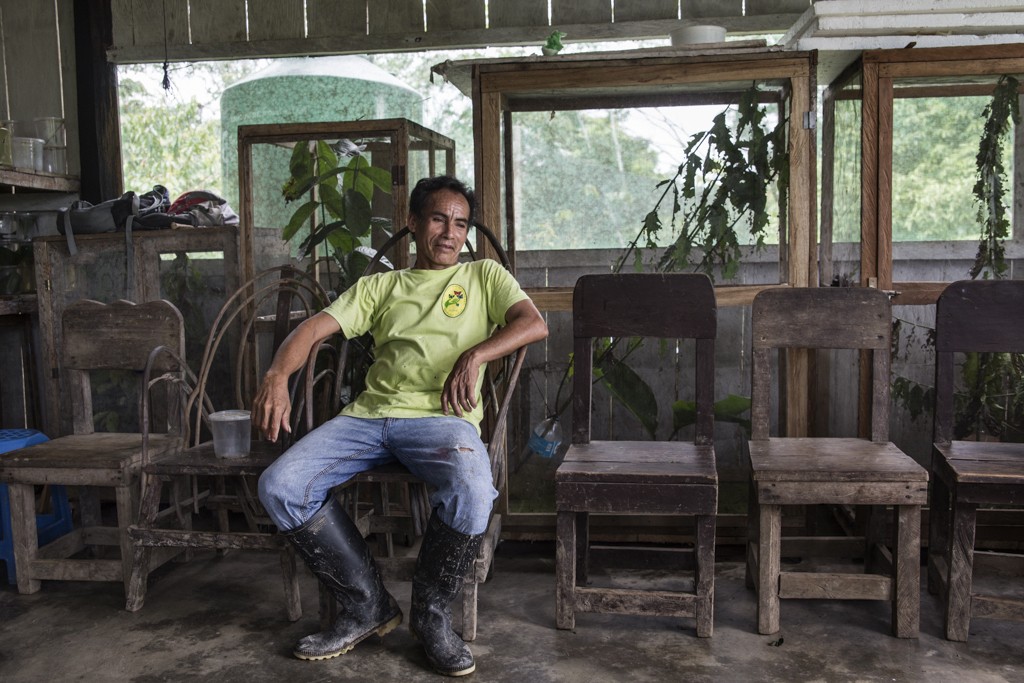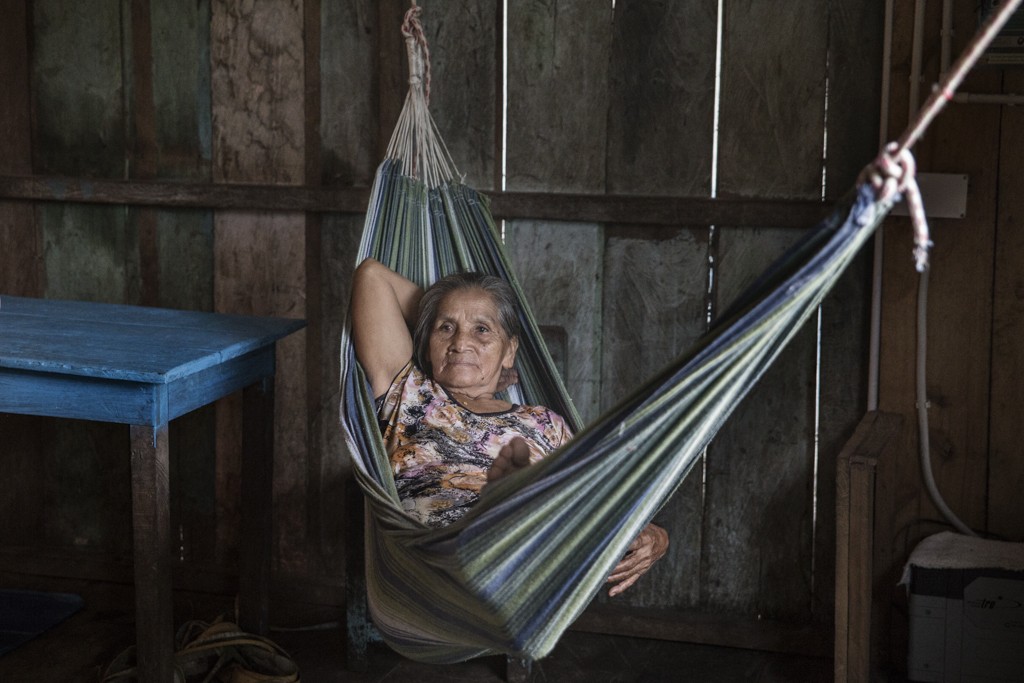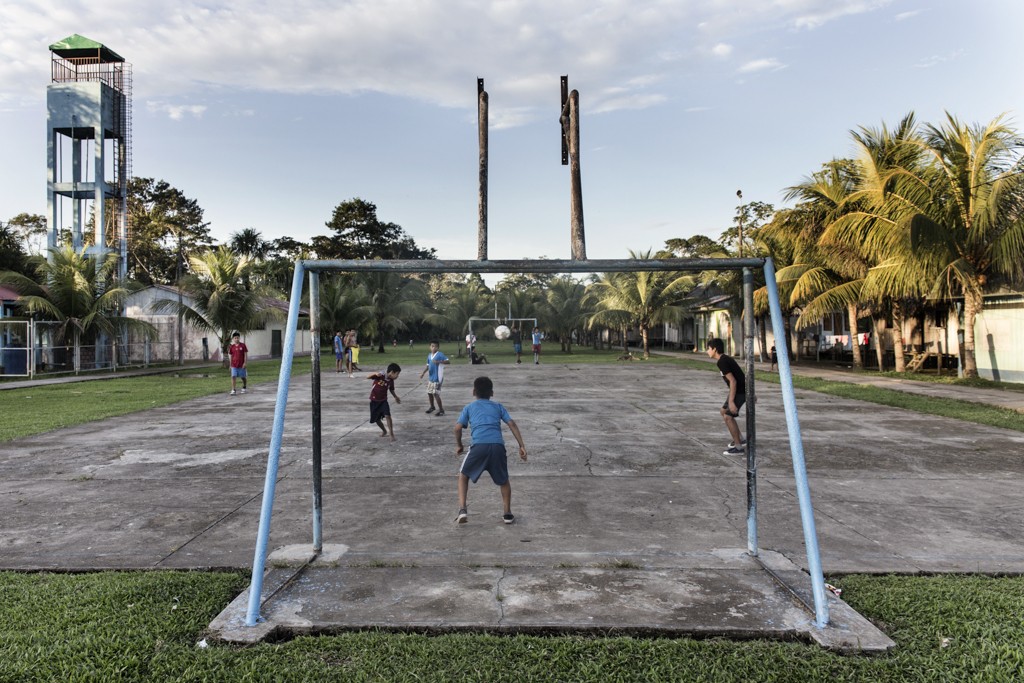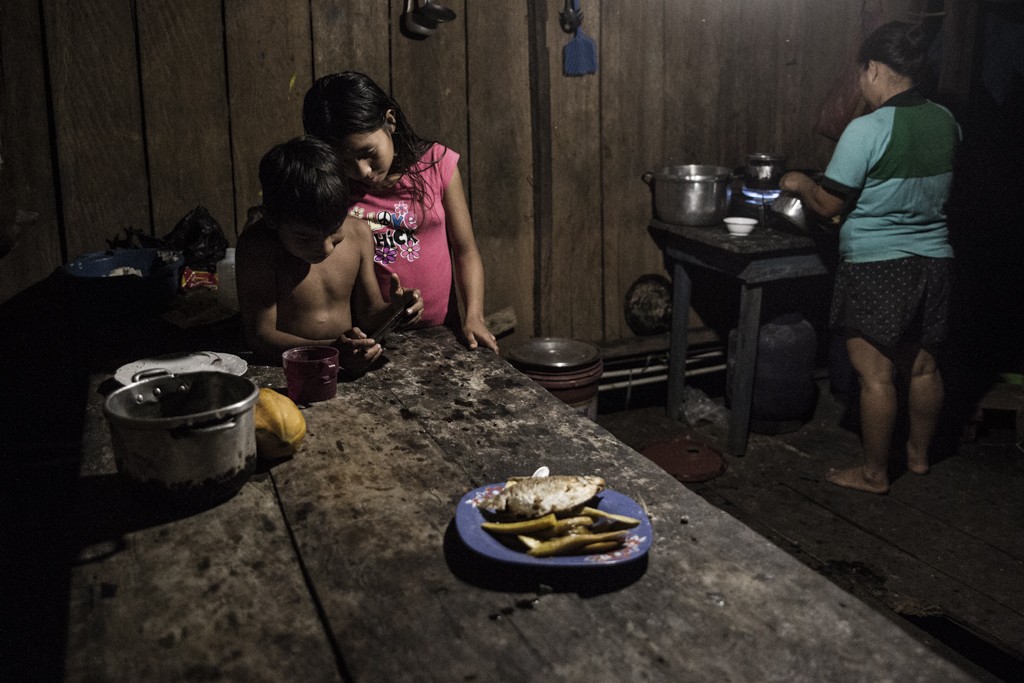On The Banks of The Great River
In the Peruvian Amazon, on the banks of the great river, there are small communal peasant communities that were founded in the rubber rush that occurred in these territories in the late nineteenth and early twentieth centuries. Many families who came to work in the extraction of rubber and wood settled in these places along the river, building their own wooden houses.
San Rafael is one of them. Located two hours by boat from the city of Iquitos, it was founded in 1915 by Rafael Panduro, hence its name, when he arrived to work in the extraction of these materials and which was followed by a few families later. Today, San Rafael already has a population of 70 families, and it is a self-managed community that makes its decisions in an assembly manner. They know that their subsistence depends to a large extent on the resources provided by the environment in which they live, so they have created a reserve to safeguard both the timber species with which their own houses and canoes are built, as well as the medicinal species.
Although from time to time they go to the city for provisions, they feed mainly on hunting and fishing. In the community, they already have a school and even a small bar. Since a few years ago they also have a small water treatment plant with which they treat the water of the Amazon for their own consumption, as well as small panels of photovoltaic electricity that provide them with a minimum of energy, until then nonexistent.
Here time seems to pass more slowly, in full contact with nature and in a community environment, where the great river with its comings and goings marks the lives of the people.
A orillas del Gran Río
En el Amazonas peruano, a orillas del gran río, existen pequeñas comunidades campesinas comunales que se fueron fundando a raíz de la fiebre del caucho que se produjo en estos territorios a finales del siglo XIX y principios del XX. Muchas familias que llegaron para trabajar en la extracción del caucho y de madera se fueron asentando en estos lugares a orillas del río, construyendo sus propias casas de madera.
San Rafael es una de ellas. Situada a dos horas en barco de la ciudad de Iquitos, fue fundada en 1915 por Rafael Panduro, de ahí su nombre, cuando llegó para trabajar en la extracción de estos materiales y al que siguieron unas cuantas familias más adelante. Hoy, San Rafael ya cuenta con una población de 70 familias, constituyendo una comunidad autogestionada que toma sus decisiones de manera asamblearia. Saben que su subsistencia depende en gran medida de los recursos que les proporciona el medio en el que viven, por lo que han creado una reserva para salvaguardar tanto las especies maderables con las que se construyen sus propias casas y canoas, así como las especies medicinales.
A pesar que de vez en cuando van a la ciudad a por provisiones, se alimentan fundamentalmente de la caza y la pesca. Desde hace unos pocos años ya cuentan con una pequeña potabilizadora con la que tratan el agua del Amazonas para su propio consumo, así como pequeños paneles de electricidad fotovoltaica que les proporcionan un mínimo de energía, hasta entonces inexistente.
Aquí el tiempo parece transcurrir más lentamente, en pleno contacto con la naturaleza y en un ambiente comunitario, donde el gran río con sus idas y venidas marca la vida de las personas que ahí residen.
